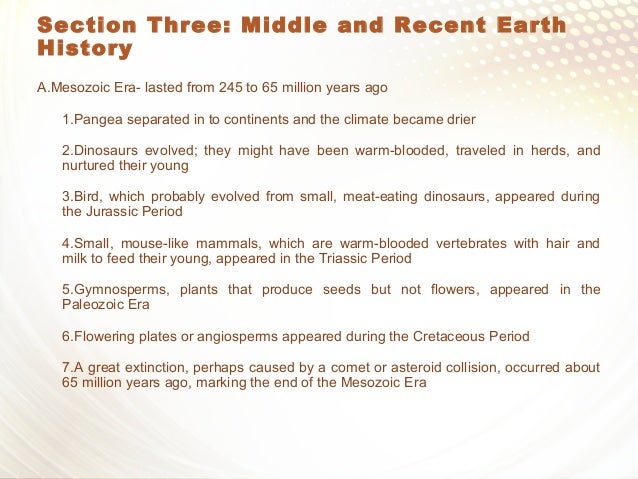Middle And Recent Earth History
Contents.Earth Day was founded in 1970 as a day of education about environmental issues, and Earth Day 2019 occurs on Monday, April 22. The holiday is now a global celebration that’s sometimes extended into Earth Week, a full seven days of events focused on green living.
The brainchild of Senator Gaylord Nelson and inspired by the protests of the 1960s, Earth Day began as a “national teach-in on the environment” and was held on April 22 to maximize the number of students that could be reached on university campuses. By raising public awareness of pollution, Nelson hoped to bring environmental causes into the national spotlight. Earth Day HistoryBy the early 1960s Americans were becoming aware of the effects of pollution on the environment. Rachel Carson’s 1962 bestseller “Silent Spring” raised the specter of the dangerous effects of pesticides on America’s countrysides.
Later in the decade, a 1969 fire on Cleveland’s Cuyahoga River shed light on the problem of chemical waste disposal. Until that time, protecting the planet’s natural resources was not part of the national political agenda, and the number of activists devoted to large-scale issues such as industrial pollution was minimal. Factories pumped pollutants into the air, lakes and rivers with few legal consequences. Big, gas-guzzling cars were considered a sign of prosperity. Only a small portion of the American population was familiar with–let alone practiced–recycling. Elected to the in 1962, Senator Gaylord Nelson, a Democrat from, was determined to convince the federal government that the planet was at risk.
In 1969, Nelson, considered one of the leaders of the modern environmental movement, developed the idea for after being inspired by the anti- “teach-ins” that were taking place on college campuses around the United States. According to Nelson, he envisioned a large-scale, grassroots environmental demonstration “to shake up the political establishment and force this issue onto the national agenda.”. Nelson announced the Earth Day concept at a conference in Seattle in the fall of 1969 and invited the entire nation to get involved. He later recalled, “The wire services carried the story from coast to coast. The response was electric. It took off like gangbusters.
Middle And Recent Earth History Answers
Telegrams, letters and telephone inquiries poured in from all across the country. The American people finally had a forum to express its concern about what was happening to the land, rivers, lakes and air—and they did so with spectacular exuberance.” Dennis Hayes, a young activist who had served as student president at Stanford University, was selected as Earth Day’s national coordinator, and he worked with an army of student volunteers and several staff members from Nelson’s Senate office to organize the project.
Complete History Of Middle Earth
According to Nelson, “Earth Day worked because of the spontaneous response at the grassroots level. We had neither the time nor resources to organize 20 million demonstrators and the thousands of schools and local communities that participated. That was the remarkable thing about Earth Day. It organized itself.”. On April 22, rallies were held in Philadelphia, Los Angeles and most other American cities, according to the Environmental Protection Agency.


In City, Mayor John Lindsay closed off a portion of Fifth Avenue to traffic for several hours and spoke at a rally in Union Square with actors Paul Newman and Ali McGraw. In, D.C., thousands of people listened to speeches and performances by singer Pete Seeger and others, and Congress went into recess so its members could speak to their constituents at Earth Day events.The first Earth Day was effective at raising awareness about environmental issues and transforming public attitudes. According to the Environmental Protection Agency.